

- Contact Us
- Search
-
Mayflower400 partner destinations:
10 statues and memorials to visit on the Mayflower 400 trail
Jul 17, 2019
The Mayflower Pilgrims historic journey across the Atlantic left a legacy of freedom, humanity and imagination that is still influential today.
And that legacy is honoured across England and Holland - from the towns and villages they came from to the maritime ports they stopped in en-route to America.
Many of those places mark their connection to the Pilgrims with beautifully constructed memorials and statues, with lots to be found on the Mayflower 400 trail.
Here are 10 of them to look out for:
Pilgrim Father’s Memorial, near Boston
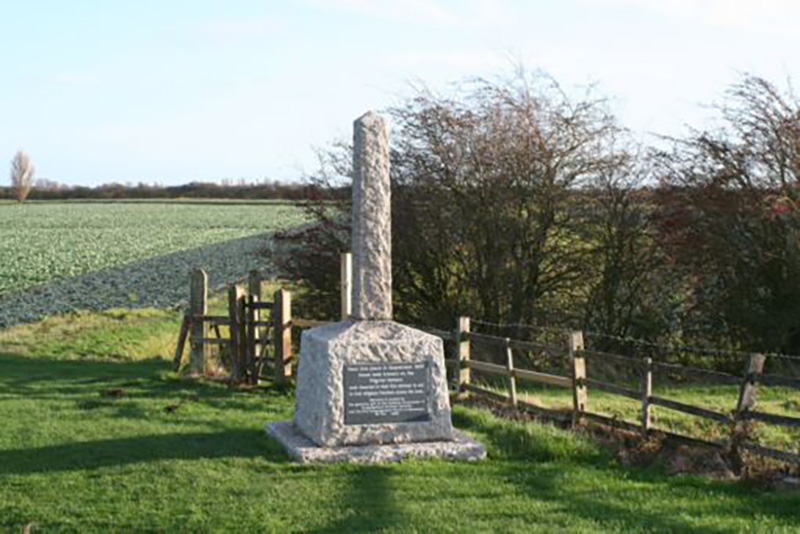
The Pilgrim Memorial at Scotia Creek near Boston in Lincolnshire, commemorates the attempt at finding religious freedom in Holland in September 1607 by the Separatists who would go on to organise the Mayflower's pioneering journey.
The men from a group of villages including Scrooby in Nottinghamshire, chartered a Dutch ship to take them to Holland but were betrayed to the local authorities by the captain. They were arrested, then tried by magistrates at Boston Guildhall where they were imprisoned in the cells for about a month. In 1608, once released they made a second, successful attempt to travel to Holland and the group moved to the city of Leiden in 1609 before setting sail for the New World in 1620.
The memorial is a small granite obelisk mounted on a granite block and was erected on the 350th anniversary of the event by Boston Borough Council with donations from the General Society of Mayflower Descendants.
The inscription has been updated to say “Near this place in September 1607 those later known as the Pilgrim Fathers were thwarted in their first attempt to sail to find religious freedom across the seas.”
The memorial is within Havenside Countryside Park and sits on the north bank of the River Haven. Built in 1957 the site of the memorial is hugely atmospheric and signifies the lengths the Separatists were prepared to go to escape persecution.
The Pilgrim Monument, Immingham
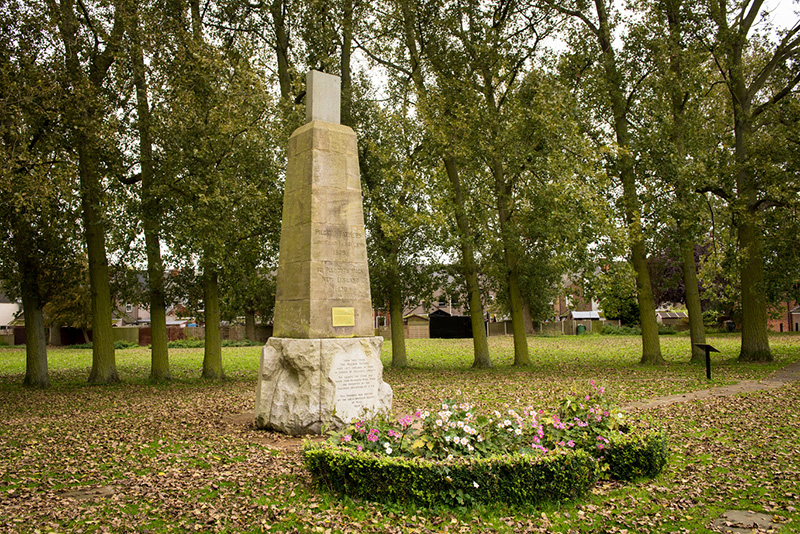
In 1608, the year after the trial of the Scrooby congregation at Boston Guildhall, the Pilgrims made another attempt to escape to Holland, securing the services of a Dutch boat and her captain, and this time it was successful.
They set sail from Immingham Creek on the coast of North East Lincolnshire, with only men onboard. The women and children joined them later in Holland.
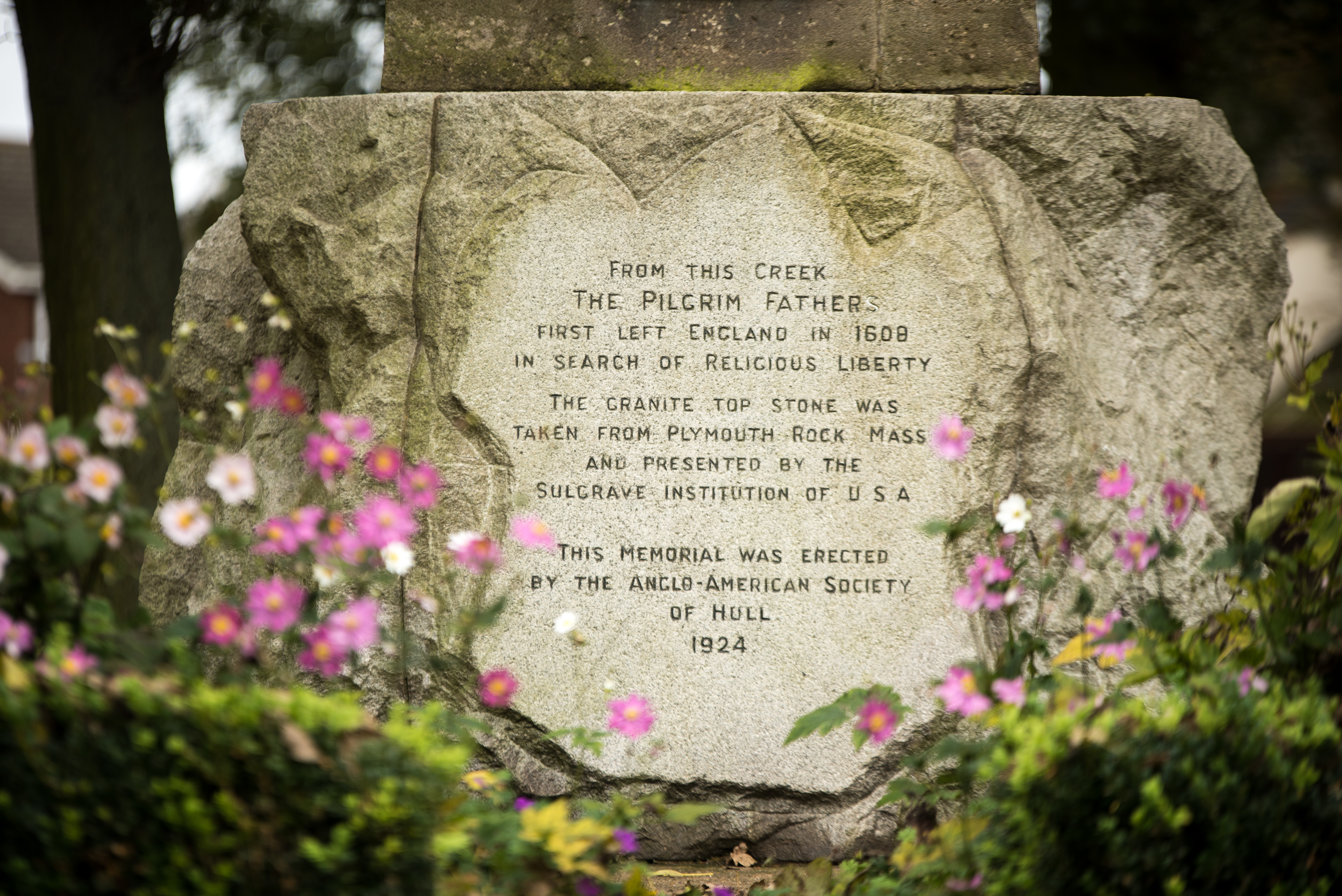
Immingham Creek is now part of the large port of Immingham, the largest port by tonnage in Britain. On a green known as Pilgrim Park, near to the town’s St Andrew’s Church, stands the Pilgrim Monument. It is a memorial to those who made the journey to Holland, was organised in 1924 by the Anglo-American Society and is made with rock from Plymouth, Massachusetts.
William Brewster Alley, Leiden
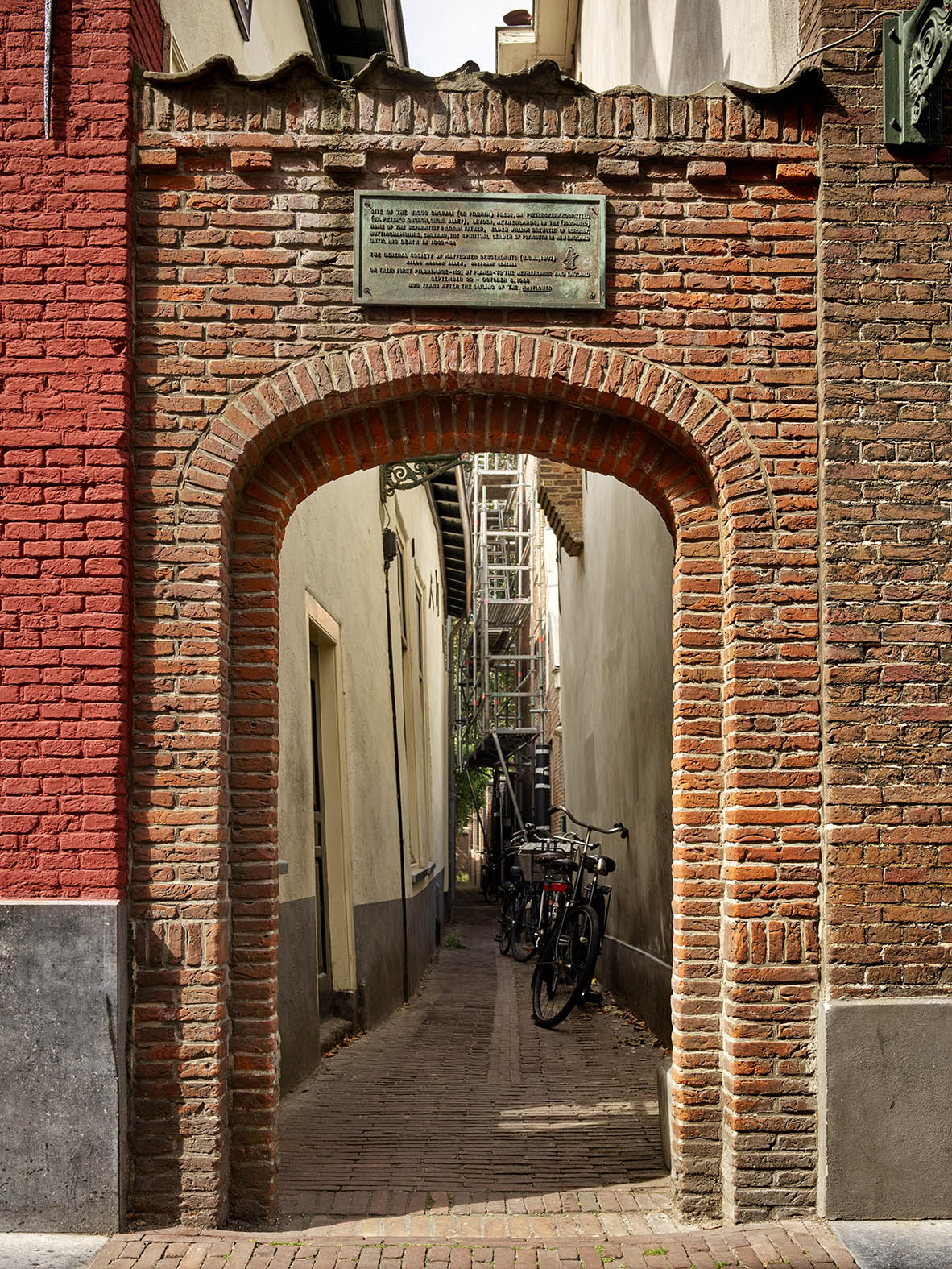
The Pilgrims spent over a decade in Leiden before their historic voyage to America in 1620. There are many plaques and memorials that honour their legacy in Leiden, including the one at William Brewster Alley. Brewster, one of the colony's leaders, lived and worked in an area of Leiden near Pieterskerk. Today the street where he lived is called William Brewstersteeg. Brewster’s house has nearly disappeared through later enlargement, but the blank end wall can still be identified by the contrast of its bricks with those added later. His house was the last on the right. Brewster set the type here for several of the books he clandestinely published in Leiden; Edward Winslow, who had been trained as a printer in London, helped Brewster and no doubt lived in this house before his marriage. Also in this house Brewster taught English to university students.
The Pilgrims left Leiden in 1620 en route to America. They passed under the Vlietbrug bridge on a river barge destined for Delfshaven where they boarded the Speedwell destined for Britain. Today you can find a monument commemorating their departure. It was commissioned by Leiden Archives and created by sculpture Gert van der Woude in 2003. It is tucked away in a secluded spot by the bridge and features a list of the family names of the Pilgrims.
In Delfshaven itself you can explore the Pilgrims Father Church, where its claimed the Pilgrims spent the night praying before boarding the Speedwell. Inside the church today, a window with stained glass, depicting the difficult crossing, shows the historic moment at which the Pilgrims set off. In addition to the impressive window, there is a bronze plaque of the Boston Congregational Club from 1906, praising the hospitality extended by the church towards the pioneers.
Conversely, there are now numerous government buildings and church communities in the United States that can display relics from the Pilgrim Fathers Church. In 1866, the church authorities received a request for a commemorative plaque from Delfshaven, which could then be immured in the church in Chicago. This municipality’s population consisted of descendants from the Pilgrim Fathers and they thought it was a lovely idea to visualize the ties with Delfshaven. The Delfshaven authorities honoured the request by sending a small tombstone from 1595. As a token of appreciation, they received a stone of the type that had been in building the church in Chicago. Later, one of the descendants from Plymouth handed the Pilgrim Fathers Church a plaque commemorating the fact that the Pilgrim Fathers left Delfshaven 350 years ago. The plaque is on display in the 'Pilgrim Fathers Memorial’ and together with a number of other religious artefacts, it bears testimony to the special link between Delfshaven and the Pilgrim Fathers.
United Reformed Church, Gainsborough
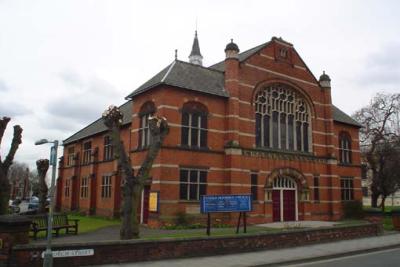
Gainsborough is home to the United Reformed Church’s John Robinson Memorial Church, which was built in honour of the ‘Pastor to the Pilgrims’ and the whole building is an important memorial on the Mayflower Trail.
John Robinson became involved with leading preachers in the Nottinghamshire and Lincolnshire area and was among the ‘Scrooby Separatists’ who attempted to flee to Holland in 1607, but were thwarted and held by local authorities in Boston. Robinson was among the group who made a second, successful attempt to sail from Killingholme near Immingham to Holland in 1608.
In 1892 it was agreed by leading Congregationalists in England and America, to build a suitable church as a memorial to John Robinson on the site of the Old Vicarage. In 1901 a tablet was unveiled at the church, which reads “This tablet, unveiled June 11th 1902 in the 300th year after the formation of the church in Gainsborough with which the name of John Robinson is associated, stands as a record of the co-operation of American with English Congregationalists in erecting a building to commemorate him, the thought of whom stirs equal reverence in English and American hearts”.
Mayflower Memorial, Southampton
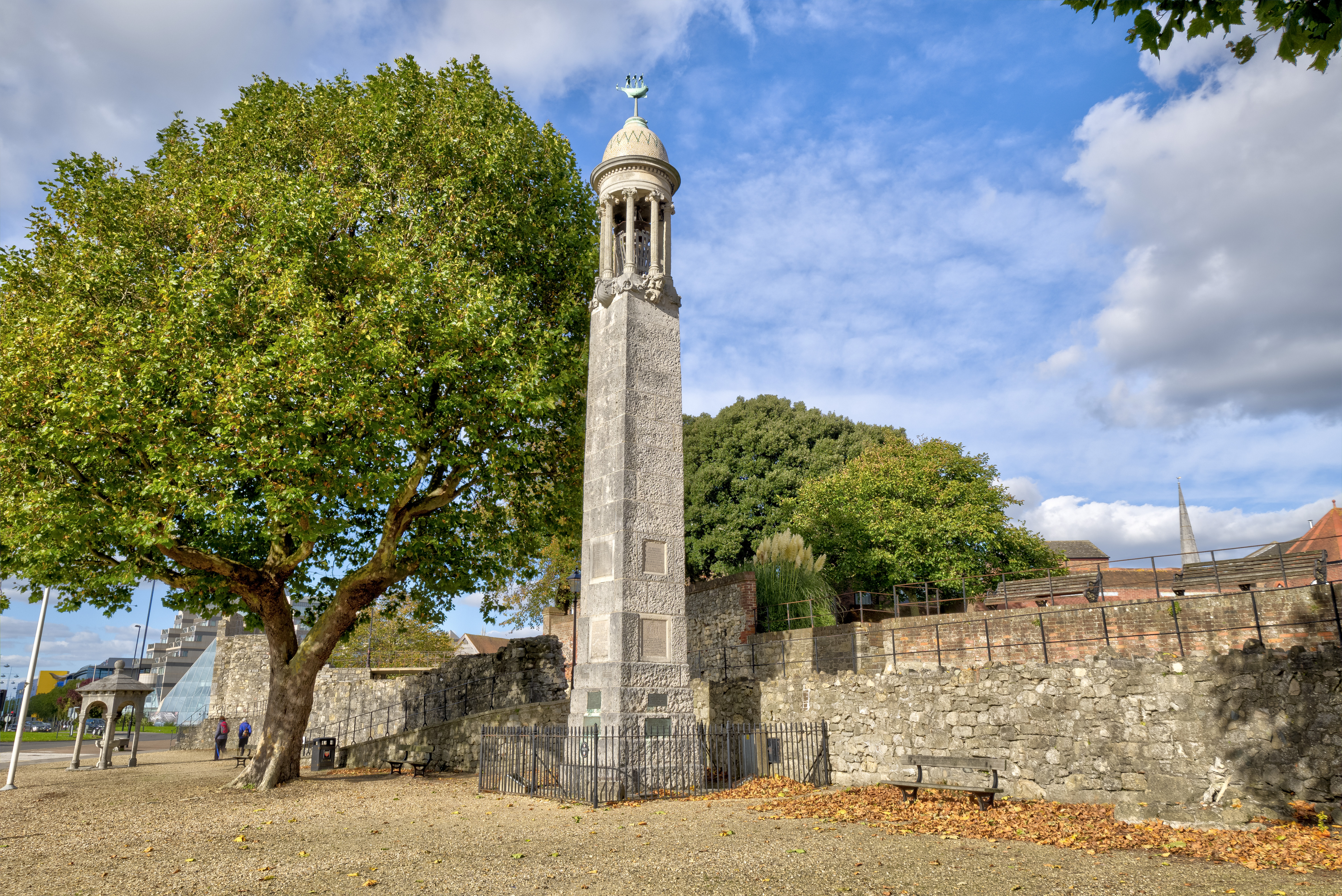
The Mayflower and Speedwell ships arrived in Southampton in July 1620 ready to prepare for their voyage across the Atlantic. It was a thriving seaport offering all the commercial facilities to provision and equip the passengers and crew for the long journey.
Southampton’s Mayflower Memorial was built in 1913 and unveiled by the American Ambassador. It was designed by RM Lucas and built by the local stonemasons Garret & Haysom. On top of the memorial you can see a model of the Mayflower. Underneath the model is a representation of a firebox, which would have been found on the ship.
Descendants of the original Pilgrims were permitted to fix plaques to the memorial. These include one to John Alden who joined the group in Southampton and went on to become one of the Founding Fathers. Stephen Hopkins, another Founding Father is also remembered on the memorial alongside his wife and children.
The Mayflower Steps, Plymouth
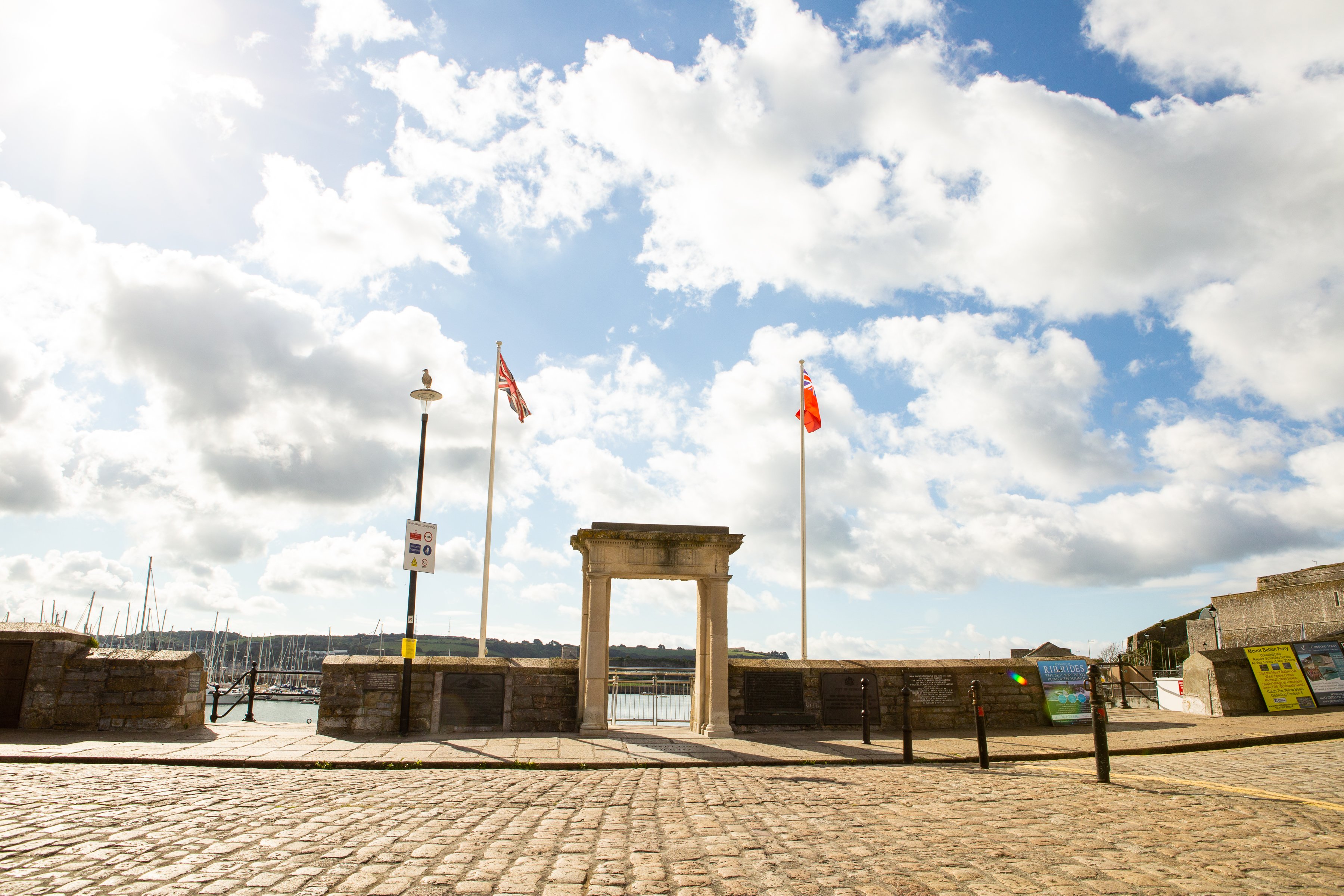
The Mayflower Steps monument is Plymouth’s most significant memorial to the Pilgrims. The Steps are close to the site in the Barbican from which the 102 passengers are thought to have left England on the Mayflower destined for America in September 1620.
The actual steps the Pilgrims left from no longer exist, considered to be roughly where a Victorian public house, the Admiral MacBride, now stands - which is home to a granite block bearing the ship’s name.
The Mayflower Steps are flanked by the British and American flags and consist of a commemorative portico with Doric columns of Portland stone that was built in 1934. A small platform over the water with a brushed steel rail, nautical bronze artwork and historical information is also part of the memorial.
The passengers of the Mayflower and Speedwell ships had no links with Plymouth but because of bad weather 300 miles out in the English Channel were forced to put in to the city seeking shelter and essential repairs. It was then that they were told the Speedwell was not fit to sail. Some of the group stayed in Plymouth abandoning the journey, whilst the remainder all boarded the Mayflower. Please be aware that the Mayflower Steps are currently under refurbishment.
Statue of Captain Christopher Jones, Southwark, London
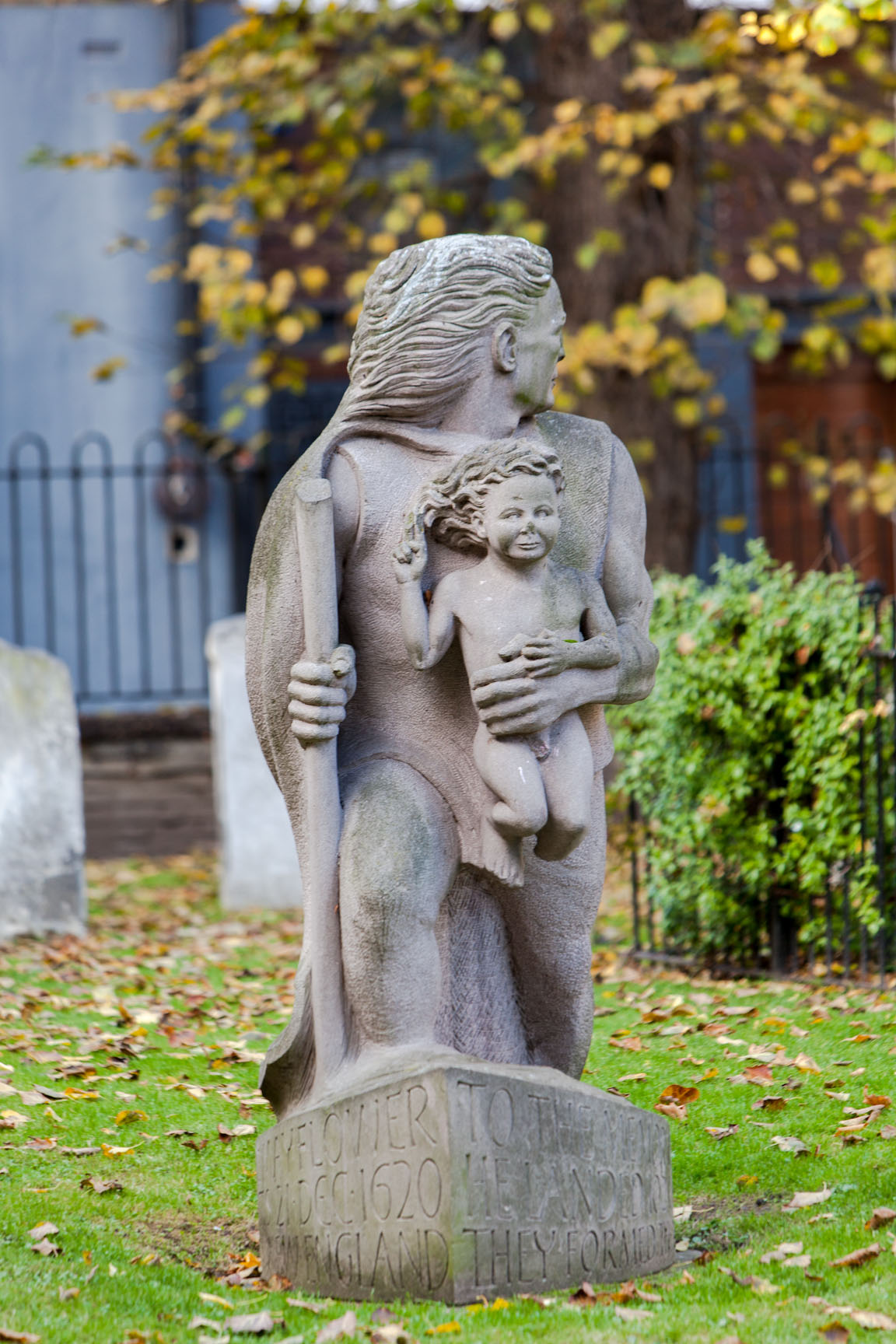
A statue of Christopher Jones, master and captain of the Mayflower ship is situated in the grounds of St Mary’s Church in Rotherhithe. Jones, along with many crew members lived in Rotherhithe, and is buried at St Mary’s Church. The Mayflower left Rotherhithe to meet the Speedwell in 1620.
The statue is represented in the guise of St Christopher, patron saint of travellers, holding a child. The adult is looking back towards the Old World and the child is looking towards the New World. The statue is by Jamie Sargeant and was unveiled in 1995 to mark the 375th anniversary of the voyage of the Mayflower.
The plinth is in the form of a stylised boat, with sharp prow and rounded stern. Around the plinth is written: “To the memory of Christopher Jones 1570 - 1622, Master of the Mayflower. He landed 102 planters and adventurers at Plymouth Massachusetts 21 Dec 1620. They formed the Mayflower Compact & the first permanent colony in New England.”
Sunbeam Weekly and the Pilgrim’s Pocket statue, Southwark
Created by local artist Peter McLean in 1991, the statue of the Sunbeam Weekly and the Pilgrim’s Pocket can be found overlooking Cumberland Wharf garden on the Southbank of the River Thames at Rotherhithe in the London Borough of Southwark.
It depicts the ghost of a Mayflower Pilgrim - some believe it to be William Bradford, the Governor of the New Plymouth Colony - looking over the shoulder of a young boy who is reading a magazine called the Sunbeam Weekly.
If you study the magazine you can see a comic strip of the Mayflower’s voyage and images of modern America. In his pocket, the Pilgrim carries a 1620s ‘A to Z’ atlas of London’s streets, a lobster’s claw and a crucifix.
Edward Winslow Statue, Droitwich Spa, Worcestershire
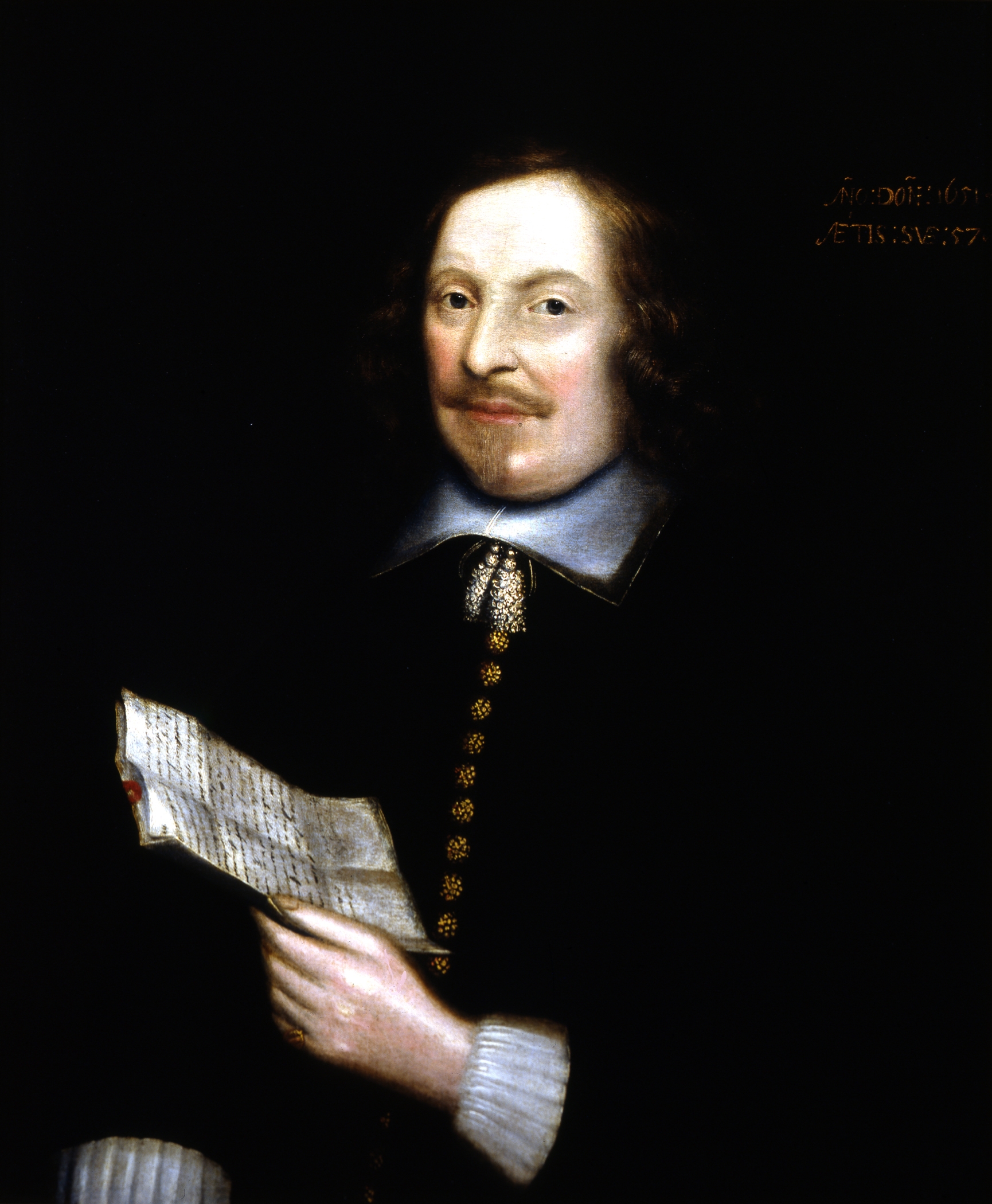
Leading Separatist and future Colony Leader Edward Winslow grew up in Droitwich Spa, Worcestershire, before being educated at nearby Worcester Cathedral. A bronze statue of Winslow, created by Sara Ingleby-Mackenzie is located at St Andrew’s Square shopping centre and was unveiled in 2009.
It shows the moment he first set foot on land in America. He often isn’t the most heralded of the Mayflower passengers, but his ability to forge friendships with the Native American community, battle in England’s corridors of power and help communicate the Mayflower’s legacy mean he is one of the Pilgrim story’s crucial figures. He was an apprentice to a stationer but decided not to fulfil his contract, and began travelling in Europe. It was then that he met the exiled English Separatist church in Leiden, Holland in 1617. He soon became one of the leading members of the group and played a large role in organising the journey to America.
Butten Meadow, Austerfield
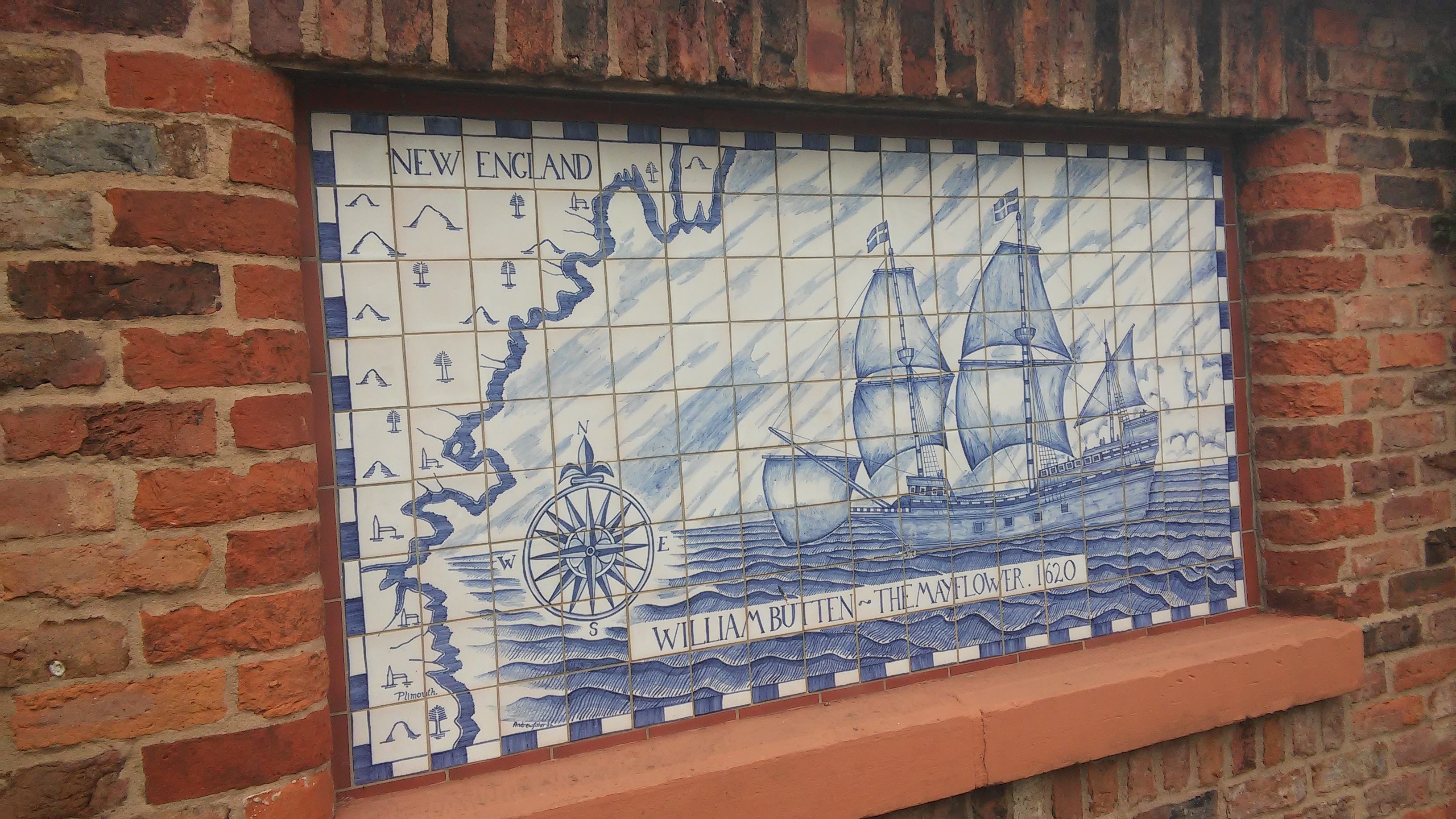
A beautiful Delft tiled memorial is on display at ‘Butten Meadow’ in Austerfield, near Doncaster. The memorial remembers young man William Butten, who was a servant of the ship’s doctor’s but who died on the voyage in 1620 and did not reach America. Butten was from Austerfield and the meadow on a quiet residential road, has since been named after him and his life is commemorated with the large tiled plaque.
Austerfield was also home to William Bradford who travelled on the Mayflower, drafted the Mayflower compact and eventually went on to be Governor of Plymouth Colony. He was baptised at St Helena’s Church in Austerfield.
Sign up for the latest Mayflower 400 news
You'll be the first to hear the latest Mayflower news, events, and more.
Log In
Register
Mayflower 400 Proudly Supported by our National Sponsors and Funding Partners






